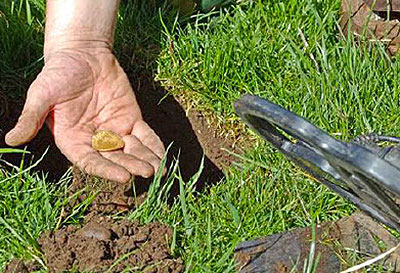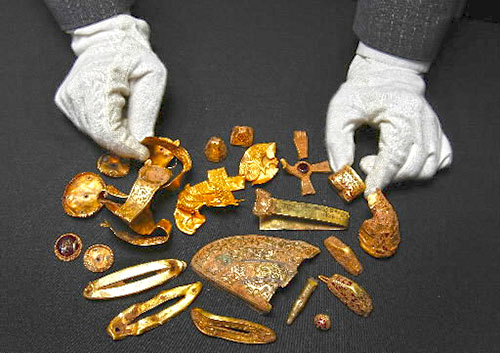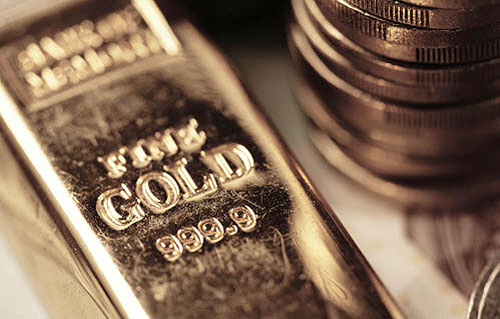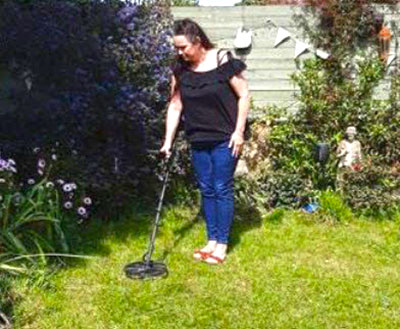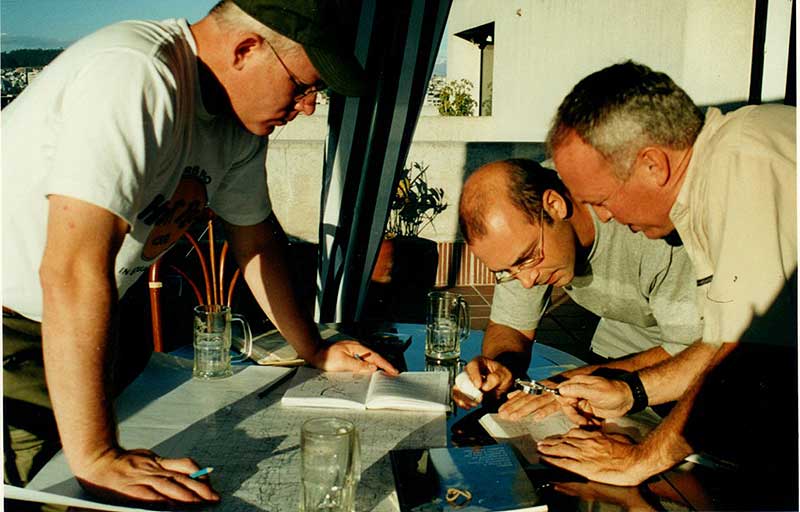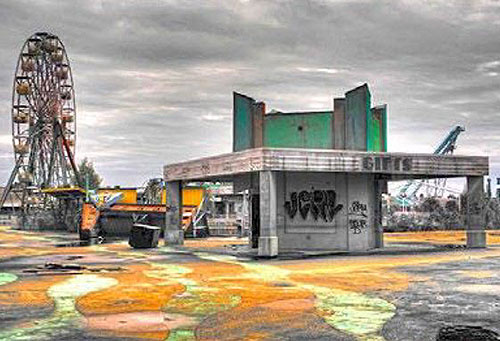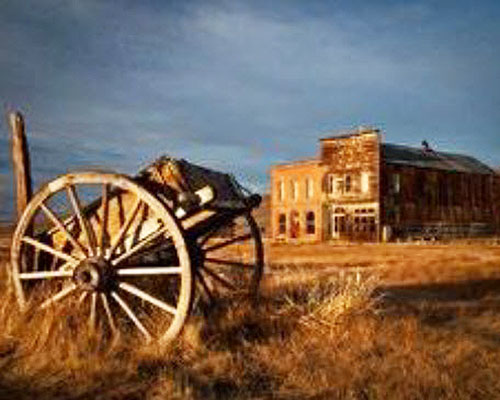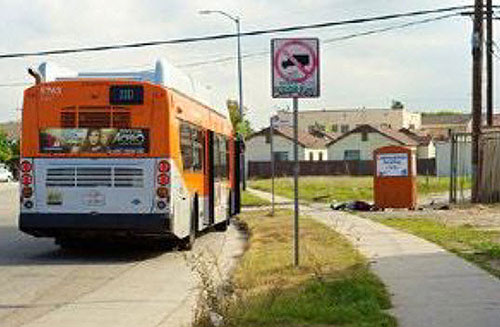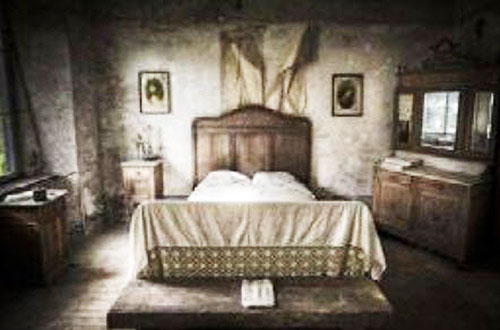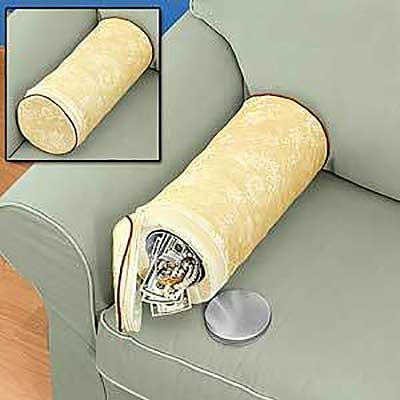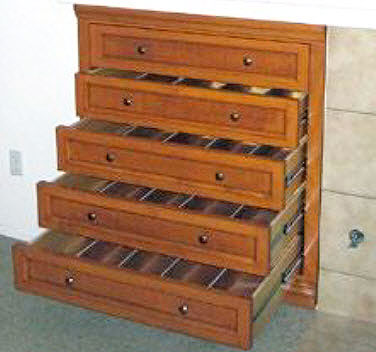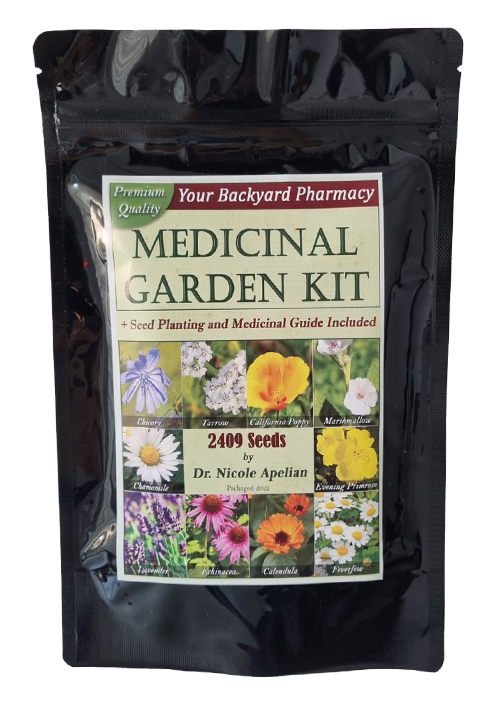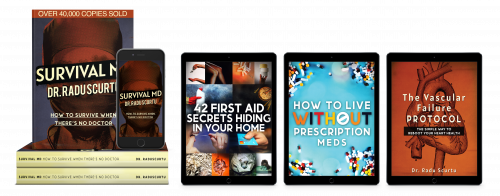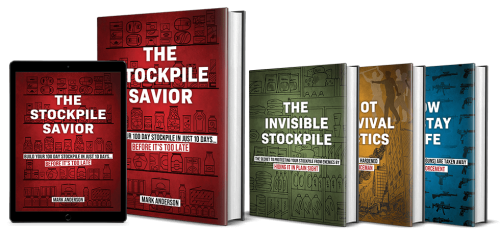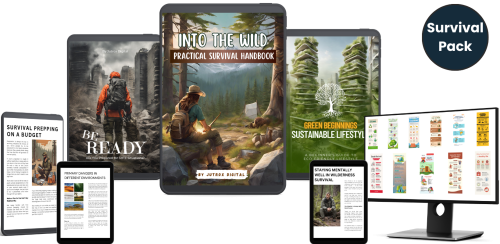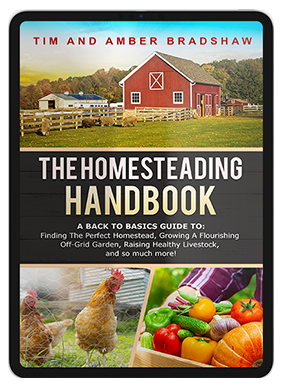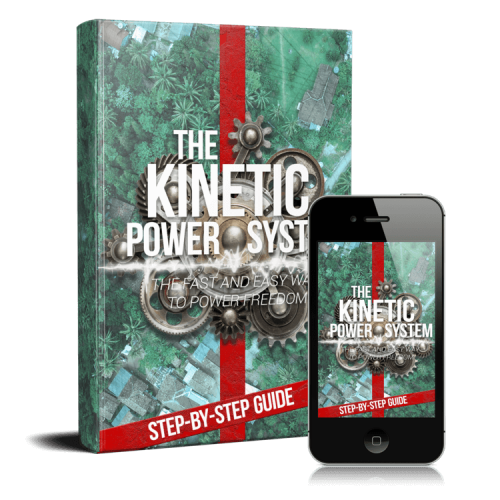- Home
- Gold
How Can I Find Gold?
It all began with the burning question: How can I find gold?
After some research, preparations and kit building, I began to find gold near home when I was only 12 years old. In fact, the very first day after building a metal detector kit, I found a gold engagement ring across the street from my home. Here is my full story below...
How Can I Find Gold?: How it all Began
You don't have to be a
prospector or miner to find gold. In fact, you can start to find gold near
home right away. In fact, you may be able to find gold right inside your own home. I'll explain it on this page.
Gold is all around us, we just can't see it. That's where this web page becomes handy – I’ll show you exactly where to find gold.
With the right tools
and knowledge, you can start finding gold in your area today. Many times, you
don't even need a metal detector.
And as the price of gold continues to rise, now is the time to get started!
How Can I Find Gold Near Home
and Other Valuables from the Start
I grew up in a middle class urban community, a suburb of Detroit. When I was still quite young, I built my first metal detector from a kit. The kit was produced by a well-known, electronics company in Michigan called Heathkit.
The unit was a simple TR (transmitter/receiver) type model GD-48 and it cost me less than $100. I worked tirelessly, all day long at the project, carefully soldering and assembling everything in strict accordance with the instruction manual.
Early the next morning, the rubber sealant on the coil was finally dry. I literally ran out into the front yard of my home to do my first test. I was shocked when I immediately recovered two silver quarters, one laying right on top of the other. I thought I had died and gone to heaven.
About an hour after finding the quarters, I went across the street to my neighbor’s yard (with permission) and within only 15 minutes there, I found a gold engagement ring with a small diamond! It was only an inch or so below the surface. Since that first gold discovery, I have been finding gold for more than 50 years!
This is why I call this page: How Can I Find Gold?
The Importance of Having Gold
As I write this page, the price of gold is getting ready to explode upward. This is both a good thing and a bad thing. The economics and politics behind it are quite troubling to me. We are in for some big changes soon.
That said, the more gold you have, the better off you will be financially as this unavoidable financial explosion takes place. It will serve you well to quickly learn how and where to find gold in abundance.
You can use this skill exclusively for yourself, or you can also learn to become a consultant; to help other people find gold too. Gold is all around us, no matter where in the world we live.
How Can I Find Gold Near Home?
When I began metal detecting near my home and in the city, I started recovering gold and valuables in very specific types of areas.
Once I got the hang of it, I almost always came home with a great payday. This is when Treasure Hunting became a serious endeavor for me.
Below, I have listed some of my better types of locations for consistent success:
How Can I Find Gold with Basic City Research?
One of the most important aspects of successful urban treasure hunting for gold, is research and investigation. In my experience, 80% of your success will depend on good research and 20% will depend on proper fieldwork.
Therefore, get ready to hit the local library, internet, local university and used bookstores. Once you have done your homework, be prepared to interview local historical experts and local old-timers.
These days, I start on the Internet doing “key word” searches on my city of interest and its essential historical highlights.
This includes historical sites, forts, historical buildings and homes, important historical people and leaders, battles, historical recreational areas, fairgrounds, abandoned sites that were once popular and busy, archaeological sites, etc.
Armed with the above information, I go to the local public library and the university library. At the libraries, I look for more in-depth information based on what I found on the internet.
I also look for historical books written by local authors. I seek out biographies and journals written by the earliest possible inhabitants and visitors to the area. Do not forget to look at archives of old newspapers. The older, the better. These are dynamite sources!
I take careful notes in a permanent journal as I go. I especially record the names of essential people with whom I can eventually speak and interview. Never forget to ask the librarian as many questions as you can. They are one of the most amazing sources of information that you can find.
Then I go to the best local used bookstores. In these books stores I carefully search through the sections on local history, local politics, local archaeology and any other section that seems pertinent to my treasure hunting goals.
Then ask the book
store owner or employee if they know of any relevant books. Many of these
people have virtually every book in the store memorized and can lead you
directly to some of the best titles.This is the key of how can I find gold near home.
Now you are ready to speak with key people that you identified in your initial research. In my experience, I find it best to be truthful, but to put a bit of a professional spin to my approach.
I have found that generally, people are turned off if they think that all I want to do is to go out and pillage valuable archaeological sites.
For example, my approach is usually one of journalism, that I am doing research and documenting important historical highlights about which I will publish a paper on my website and include appropriate photographs.
The metal detecting that I do is simply to help support my research and writing. This approach usually leads to success and local experts are almost always happy to speak with me.
Recon Site Visits
Now your main research is completed and you have identified some potentially interesting places and neighborhoods in which to search.
It is time to prioritize your potential search sites and do some initial recon visits to finalize strategies depending on the lay of the land, human traffic patterns, weather, terrain, etc.
It is always best to search a site when there are no, or the fewest possible, people nearby.
How Can I Find Gold in Urban Site Ideas
Here is a list and brief description of some of my favorite urban treasure hunting sites. They are in no special order and this list represents only a portion of potential types of urban sites. Use your creativity.
How Can I Find Gold in Old Apartment Building Yards?
In 1980 I found a $20 gold coin dated from the late1800’s in the front yard of an old apartment building in downtown Salt Lake City. I later sold the coin for more than $1,500. I also recovered more than 25 old, silver coins from that yard along with the $20 gold piece. The coins ranged in age from 1904 to 1945. There were some newer coins as well. It is advisable to ask for permission from the building manager before searching.
Always tell the property owner or manager that you will remove all the trash from the area you search. It is also nice to show this person the trash you recovered when you complete your search. In my case, I didn’t ask for permission and spent only about 1 hour searching, with no negative results. I have had especially good results searching the yards of old mansions that have been converted to apartments. It is not unlikely to find coins dating back to the 1800’s at these sites.
How Can I Find Gold in City Parks?
To search city parks, make sure you have a good discriminator on your detector, as there are usually loads of trash at these sites. Very old city parks are the best as you are more likely to find gold and older coins.
I once found more than 20 coins dated before 1900 from one old Downtown City Park in the small town of Rushville, Illinois. It was obvious that no metal detector had ever searched this park and that is exactly what you want to look for.
Be aware of the legality issue of metal detecting in various parks, especially State and National Parks!
How Can I Find Gold in Old Amusement Parks?
Always try to determine where the ticket booths were located. If there are no old photos or other ways to pinpoint these small sites, look for pockets of high coin concentrations.
Slowly and carefully, search these small sites. If the site is old and virgin (never previously searched), you could hit a bonanza.
From the right old amusement park sites, you have the potential to find a collection of small treasures valued at $500 to $1,000 in one afternoon.
How Can I Find Gold in Little-Known Historical Sites?
Let me be very clear about this... by Historical Sites, I am not referring to “official” historical sites with guided tours and signs all over the place. It is usually highly illegal to metal detect around official historical sites. In this instance, I am referring to lesser-known or unknown sites that you discover because of your superb research skills.
Historical Sites can include places like ferry crossings, native Indian camps, original city homes and buildings, abandoned old buildings in a state of ruin, forgotten battle sites, forts and old swimming holes.
Old Trees, Roots Systems and Large Stumps
The rule here is the older and bigger, the better. I cannot tell you how potentially important these small sites are for old coin and jewelry caches. Pay particular attention to tree sites that are located near old homes and old business districts.
During the 1700’s and 1800’s, many people buried their money, usually due to not trusting banks or not having any banks in the area. In addition, the years of the great depression totally obliterated confidence in banks.
Again, vast numbers of people decided to bury their money and valuables. So many of these caches were forgotten by, or not known to surviving family members.
Also, how many people have stopped to rest in the shade of a big tree over the years, sitting down with their back against the tree?
More than a few times, coins would probably have rolled out of their pockets as they leaned back. After reading this, you will never look at a big, old tree the same way again.
How Can I Find Gold Near Grassy Bus Stops
Bus stops are where people often have their hands full of stuff while they reach into their pocket or purse to pull out money for the bus.
This is an extremely likely area where coins, and even jewelry, will fall into the grass. It is either too inconvenient to bend down with hands full to retrieve lost coins or it is very difficult to find the coins in the grass.
You get the idea, right? The older the bus stops, the better.
How Can I Find Gold Between Sidewalk & Curbs?
Technically, in many neighborhoods where there is a grassy area between the sidewalk and street, this area is owned by the city. However, often this space is cared for by the nearest property owner and they treat it as their own. Therefore, you may want to ask for permission before searching. This has usually been a productive area for me to hunt, especially within three or four feet of the sidewalk.
How Can I Find Gold Near Sidewalk Margins
In areas of higher foot traffic, from the edge of the sidewalk to three feet toward the curb is a zone where many valuables are lost over a period of time.
Sometimes, people are distracted as they walk and don’t notice when they drop something of value. This is often a zone no one has thought to search with a metal detector before.
Put most of your attention on old sidewalk margins in old neighborhoods and districts.
Transition between Demolition & New Constructions
One day while driving around an old neighborhood in Calgary, Alberta, with my metal detector in the trunk, I noticed that a very old sidewalk had just been removed and that preparations were being made to pour a new one.
I was struck with the idea of detecting the dirt that had been below the original sidewalk for nearly 80 years.
It didn’t even take one minute to get my first, loud signal. I immediately popped a Canadian silver quarter out of the ground in nearly mint condition.
The quarter was dated from the 1910’s.I continued searching and within a half-hour, I had recovered about eight very old coins from very shallow depths, most of them in great condition!
I have never heard of this strategy before and this is the first time I am writing about it. However, I have heard of fantastic recoveries from old parking lot sites that were being removed and replaced.
One of the great advantages of this strategy is that when the pavement or asphalt is removed, you are already 5” or 6” down, and your metal detector can reach much deeper, older ground than normal.
Keep your eyes peeled for all types of excavations in older areas too. Always run your detector over piles of dirt that has just been removed from areas of interest by an excavator.
Always search areas where a level of dirt has been removed, giving you access to deeper, older ground which usually produces older, more valuable treasures.
Now, Let's Say You Want to Find Gold Much Closer to Home than Searching the City
To get started with your find gold near home tactics, here is a small list of places you can search in your own home, or in other homes:
• Above false closet ceilings,
• Behind wallpaper - look for bulges,
• Between layers of shelf paper - popular for paper currency,
• Buried in flower gardens,
• In hollowed-out beams and/or logs in log cabins,
• Inside door locks,
•Inside hollow bed posts - a popular place to stash gold coins,
• Inside hollowed-out fence and clothesline posts,
• Inside hollowed-out stones placed outdoors,
• Inside old chicken coops,
• Inside or surrounding fireplace “clean-outs”,
• Sewn into old carriage seats and horse harnesses,
• Under false bottoms in feed bins in barns,
• Under paving stones,
• Under porch floors,
• Under siding and shingles,
• Under steps and stairs,
• Under window sills and casements,
• Behind loose stones or bricks in foundations,
• Behind mantles made of slate and other materials,
If you would like to read a great article about finding gold in old homes, click here.
These are only a few of my best locations and strategies for how to find gold near home. There are many more you can find in my e-book entitled: "How Can I Find Gold?".
Be sure to check out the "vital details" of our new
Survival Intelligence Blackfile.

